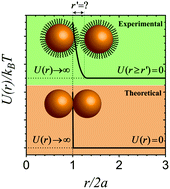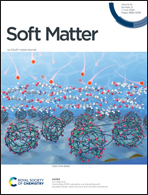Contact criterion for suspensions of smooth and rough colloids
Abstract
We report a procedure to obtain the search distance used to determine particle contact in dense suspensions of smooth and rough colloids. This method works by summing physically relevant length scales in an uncertainty analysis and does not require detailed quantification of the surface roughness. We suspend sterically stabilized, fluorescent poly(methyl methacrylate) colloids in a refractive index-matched solvent, squalene, in order to ensure hard sphere-like behavior. High speed centrifugation is used to pack smooth and rough colloids to their respective jamming points, ϕJ. The jammed suspensions are subsequently diluted with known volumes of solvent to ϕ < ϕJ. Structural parameters obtained from confocal laser scanning micrographs of the diluted colloidal suspensions are extrapolated to ϕJ to determine the mean contact number at jamming, 〈z〉J. Contact below jamming refers to nearest neighbors at a length scale below which the effects of hydrodynamic or geometric friction come into play. Sensitivity analyses show that a deviation of the search distance by 1% of the particle diameter results in 〈z〉 changing by up to 10%, with the error in contact number distribution being magnified in dense suspensions (ϕ > 0.50) due to an increased number of nearest neighbors in the first coordination shell.



 Please wait while we load your content...
Please wait while we load your content...